The Qualcomm Snapdragon 820 Performance Preview: Meet Kryo
by Ryan Smith & Andrei Frumusanu on December 10, 2015 11:00 AM EST- Posted in
- SoCs
- Snapdragon
- Qualcomm
- Snapdragon 820
CPU Performance, Cont
Having taken a look at Snapdragon 820 and the Kryo CPU from an architectural perspective, let’s look at our higher level benchmarks. We’ll start as always with the web benchmarks.

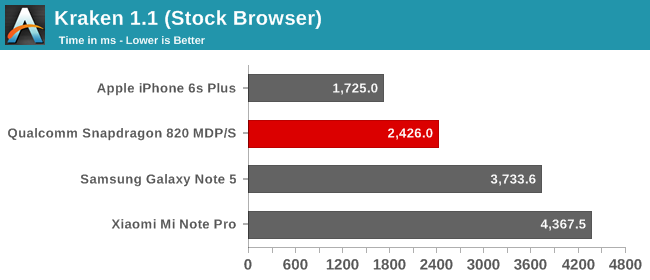
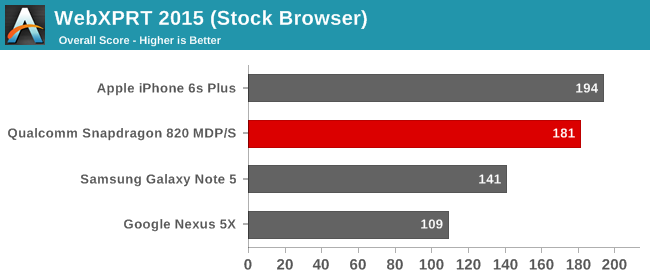
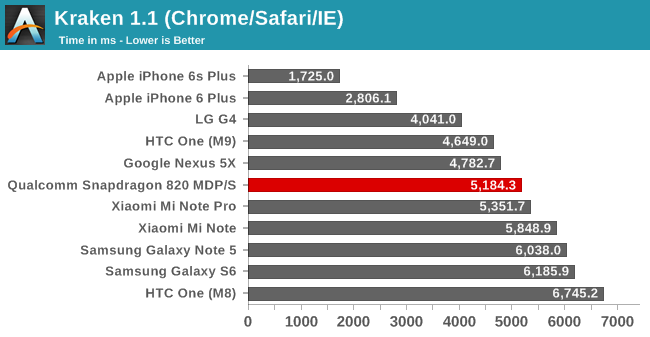

There are two things we can immediately take away from these results. The first is that currently Google Chrome is incredibly unoptimized for Kryo, and this is something Qualcomm was also quick to mention. We won’t wax on about this as there’s nothing to say we haven’t said before, but Chrome could certainly stand to implement optimized JS engines sooner.
Otherwise if we look at Qualcomm’s native browser, things are greatly improved. Relative to both the Exynos 7420 (A57) powered Note 5 and the Snapdragon 810 (A57) powered Mi Note Pro, the MDP/S shows a significant lead. In fact it pretty much blows past those devices in Kraken. However while it easily takes the top spot for an Android device, even with Qualcomm’s native browser the 820 isn’t going to be able to catch up to the iPhone 6s Plus and its A9 SoC.

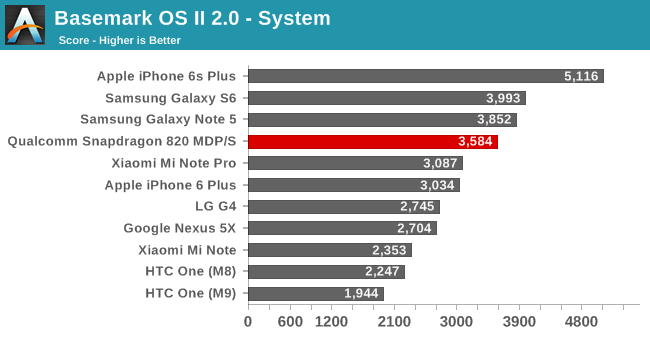
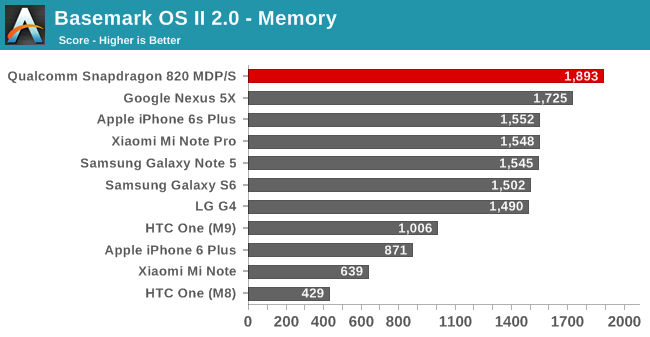
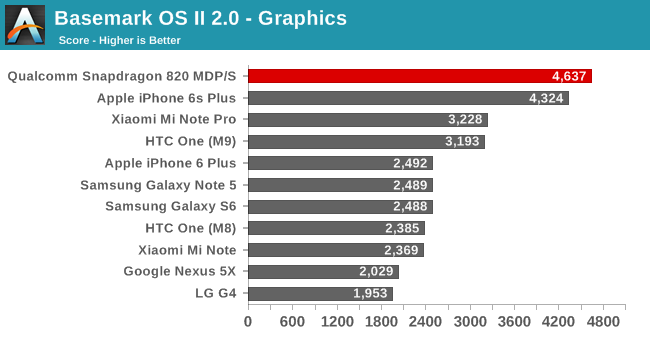
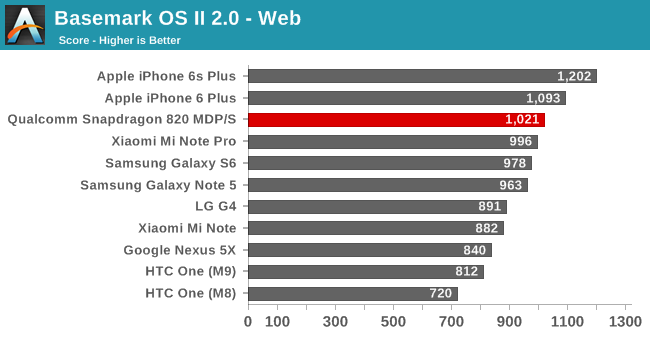
Basemark OS II 2.0 on the other hand is less consistent. The overall score again pegs the MDP/S as the best Android device, and by over 20%. However for reasons yet to be determined, the system score is still below the latest Samsung devices. Instead where the 820 shows a clear lead is with the storage (memory) score and the graphics score. In some cases it’s even beating the iPhone 6s Plus, though overall it will fall short.

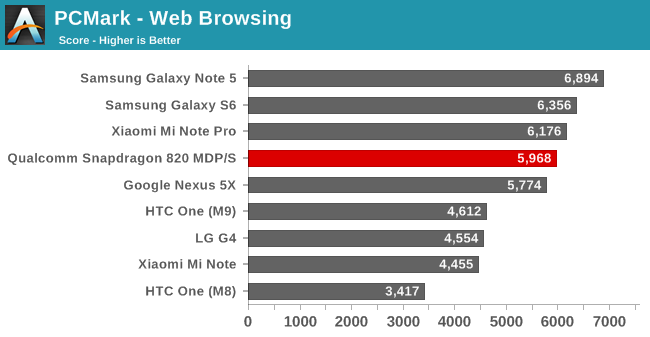
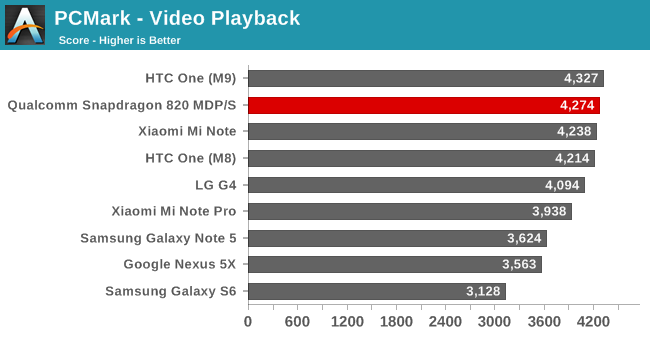
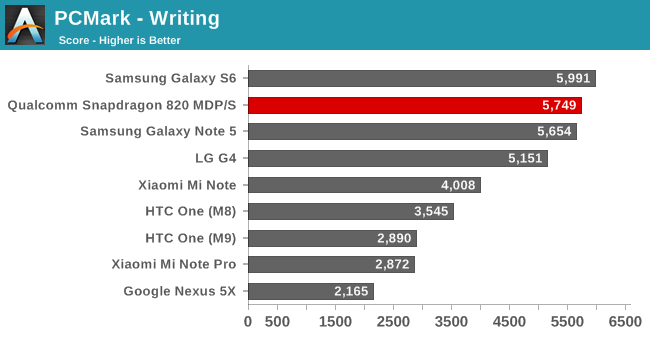
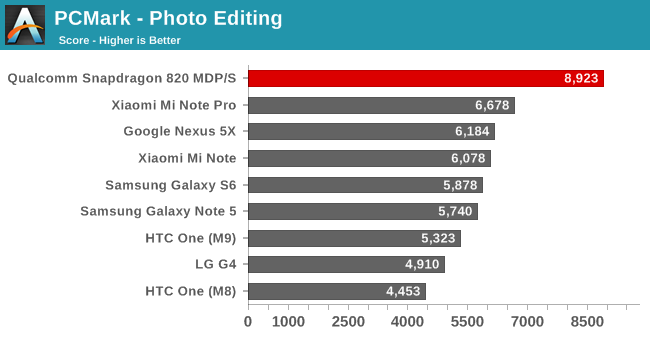
Our final system benchmark, PCMark, once again puts the MDP/S in a good light overall, while the individual sub-tests are more widely varied. Likely owing to the same optimization issues that dogged Chrome performance, web browsing performance trails the A57 devices. Meanwhile video playback closely trails the Snapdragon 810 powered HTC One M9, and writing performance won’t quite surpass the Galaxy S6. Where the 820 MDP/S makes up for it is in the photo editing score, which is through the roof. Here Qualcomm’s development device holds a 34% performance lead over the next-fastest device, the 810/A57 based Mi Note Pro.










146 Comments
View All Comments
Wilco1 - Monday, December 14, 2015 - link
This is a more realistic comparison - same frequency, phone form factor: http://browser.primatelabs.com/geekbench3/compare/...The 820 looks like a FP monster (no doubt helped by the high bandwidth), but A72 wins ST integer.
Ethos Evoss - Tuesday, December 15, 2015 - link
haha why qualcom spending money on sily cat 12 when we even won't properly use cat 6? maybe not even that lte cat 4 is not properly used..mainly in usa where 4g is unknown to most ppl
Ethos Evoss - Tuesday, December 15, 2015 - link
Anandtech only see high performance and only give likes what is most highest.. blindly appraise only high end but never gake a look at battery lige how these faster and faster smartphones stay las just half day..so pathetic.. They will NEVER review Mate 2 which is 4G and which is the best on battery life.. where these review sites aming going nowadays?
jakoh - Monday, May 30, 2016 - link
Does the kyro cores have L3 cache?StrangerGuy - Saturday, October 1, 2016 - link
Fast forward to Q4 2016 with a much better benchmark (GB4) and Qualcomm's Kyro looks even more embarrassing: Completely got destroyed by the A10 and even their own A72 SD650 is matching SD820 in ST performance with better IPC to boot. With A73 around the corner there is no good reason for Qualcomm to stick with a custom ARM core.